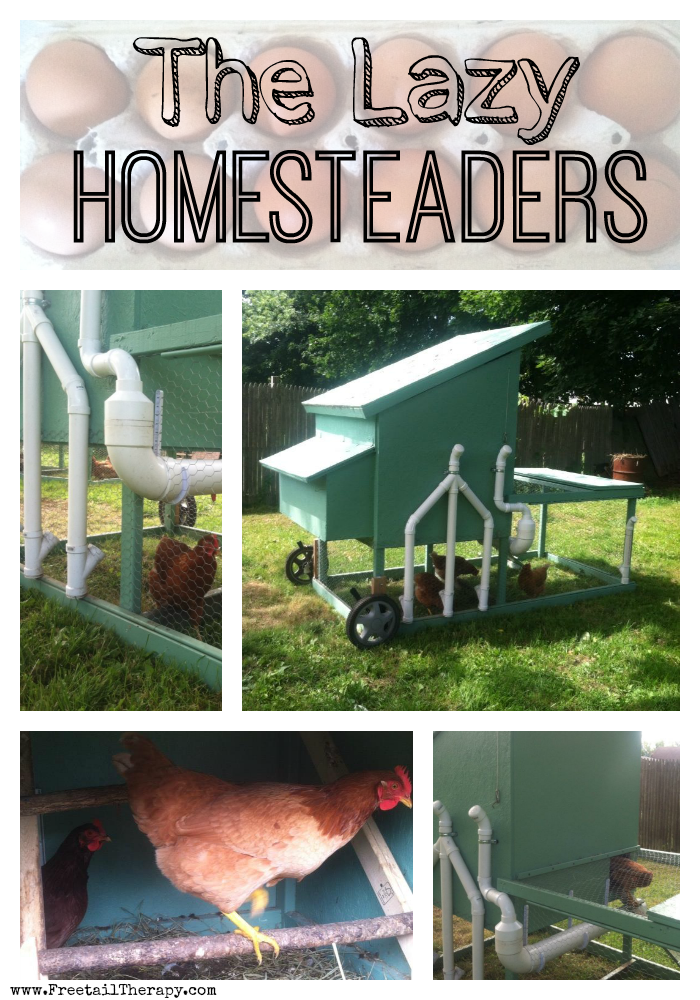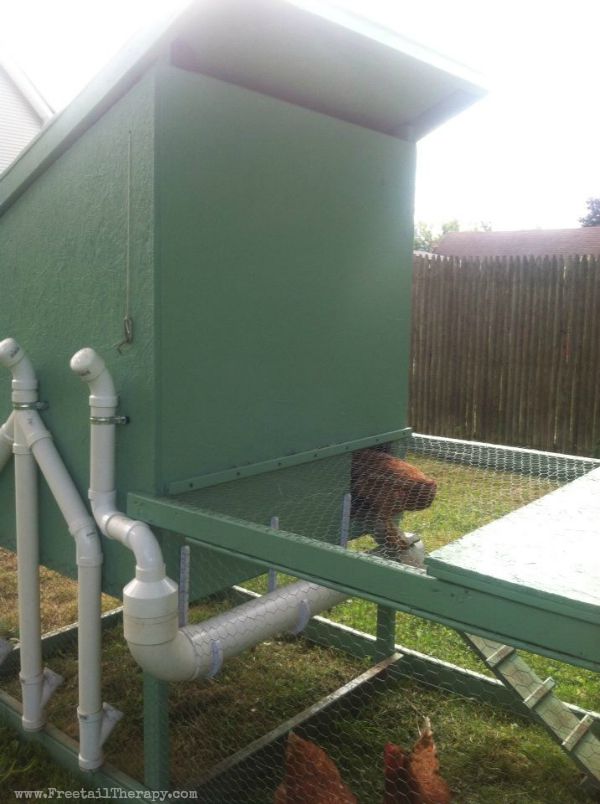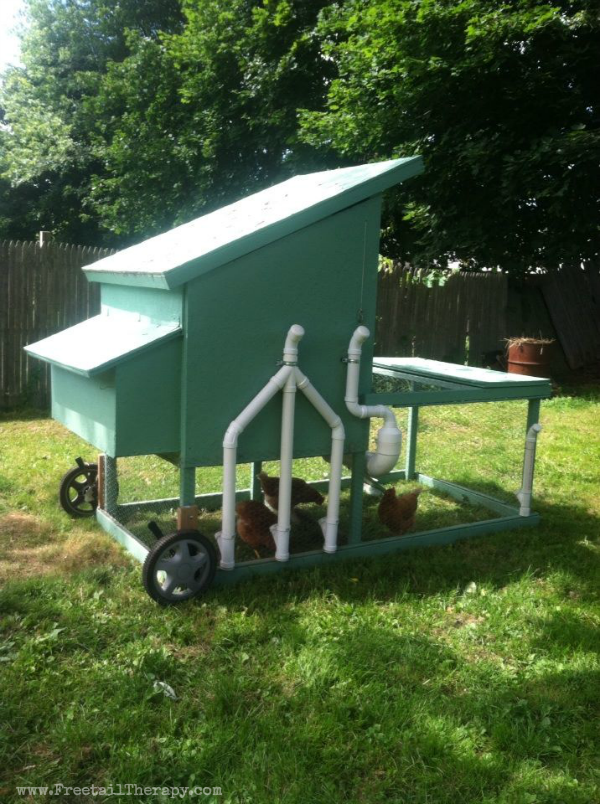We are lazy homesteaders


When someone asks me how I do it…. “How do you have time to homeschool your kids, run a business AND homestead?” my response is that we are quite lazy, which confuses them even more and I find that funny. Everyone knows that being a stay-at-home mom isn’t easy (and if they think it is they are sorely mistaken!) but on top of that, I run a business from home, “homeschool” my 6 children, run a mini farm and a Community Garden. How?! We make sure we set things up before we begin, in a fashion that will allow us to “be lazy” in the future.
I will be using the example of our chicken tractor to show you what I mean. Before we got chickens, we had a tractor design in mind but needed to make it more efficient than we have seen on other homesteads. Where I live, chickens aren’t technically legal, but there is a loophole that allows them for school projects, as long as they are always confined. Since we are unschoolers, I saw it as a perfect opportunity to use that loophole and have a year round “school project”. The first part that we had to figure out was how to make it so that our chickens could not escape, yet still could free range……in a way. Because I wanted to allow them some freedom, the tractor was the best option. A chicken tractor is generally just a pen that chickens stay in during the day and you move it each day so they always have fresh grass. However, we also needed to include their house, or roost, into the design, because we could not build a coop without extra property taxes. The fact that the structure moves, makes it so we can not be taxed for an extra building on our property. All of these things we took into account, before we bought our chickens.

Notice the PVC piping that is secured to the outside of the tractor. This makes it so that we don’t have to crawl into the pen to feed and water the chickens. The triple pipe is their feeder, the larger, curvy one is their waterer. The bottoms of the feeders have an open port that is inside of their cage and that’s where they eat from, but we are able to take the cap off the top on the outside to fill it. Their waterer has chicken nipples secured in place, which they peck at to drink their water.
You will also notice a braided nylon rope above the waterer. The rope runs through the inside of the coop and connects to a 1’x1′ ceramic tile that is used as the door. With braces around it to keep it in place, the door slides up and down when you move the rope, making it simple to let the chickens out in the morning and lock them up at night.

The back section is where the girls lay their eggs, the top lifts up for easy access. We also attached wheels to the back end so when it comes time to move their coop at night, we simply lift the front and drag it a few feet to where they will spend their next day.
My husband wakes up before everyone else, so he takes care of the daily routine. He wakes up at around 6, fills the feed, and water ports then opens the door. When the chickens run out to eat breakfast, he grabs any eggs they have already laid. He then comes back around noon for another egg collection, and since they are new to egg laying, we do another check around 4pm. Once it gets dark, the chickens herd themselves into their coop and Mark goes out to shut their door and move the tractor. It only takes a few minutes each day with the way we have everything set up.
Additional chicken tractor features are an oyster shell port near the front and a door on the opposite side, which makes cleaning their coop quick and easy. The door stays locked until it is time to clean up in there.
We have a lot to do other than take care of our homestead, so we do a lot in the beginning to set everything up in a way that will save us a lot of time down the road. In other words, we work hard to be as lazy as possible.



